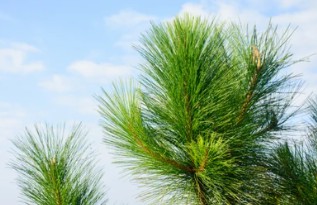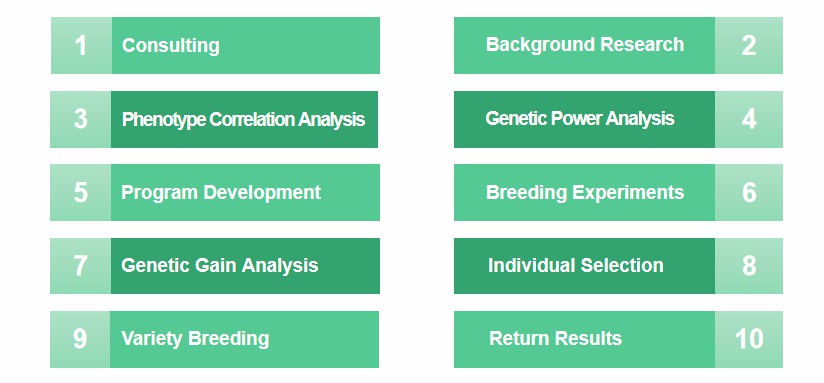
Loblolly pine (Pinus taeda L., P. taeda), a common species of southern pine, is a diploid dioecious conifer mainly heterogamous. Due to its fast growth rate and adaptation to temperate climate, it was introduced to Brazil in the 20th century and became the main economic tree species in Brazil.
P. taeda has the advantages of strong adaptability, fast growth, good quality wood, and high yield of turpentine, and it has become the main plant species in subtropical areas of the world. Its wood can be used for construction, pulp, and fiber timber. P. taeda is rich in turpentine and can be harvested for processing into rosin, its high quality. In addition, the tree is graceful; the crown is like a torch, the trunk is straight, can be used for ornamental greenery species.
As a biotechnology company representing an international level, Lifeasible has focused on forest tree breeding for many years and accumulated rich experimental experience. Our mission is to provide a one-stop, professional Pinus taeda L. breeding service to customers worldwide.
Given the large size of P. radiata and the long time between generations, simple and straightforward breeding methods are required. Our research team has scientists working in genetics, applied genetics, tree breeding, and applied tree breeding to develop the most appropriate breeding program according to the needs of our customers.
Our service strategy is to provide short-term genetic gain and maintain genetic diversity from multiple perspectives of pathology, botany, silviculture, forest products, plant propagation, field trial design, and economic analysis to produce P. radiata species with high vigor but without loss of tree or wood quality.
Direct methods suitable for breeding P. radiata include selecting, breeding, and testing many trees. One of the most valuable findings for P. radiata is the high correlation between genotypes and phenotypes from applied breeding. We often use multi-trait breeding with crosses to trees with fast growth and other superior traits. The steps of our experiment are shown below.
Breeding value, also known as additive effect value, is an essential parameter in the selective breeding of forest trees to estimate genetic gain. Breeding value cannot be measured directly but is included in the phenotypic value obtained by the combination of various genetic and environmental effects and can be obtained by statistical methods using phenotypic values and relatedness between individuals. Selection based on individual breeding values will improve selection efficiency and genetic gain in the genetic improvement process.
In this step, we first need to obtain genomic information on multiple P. taeda families and then analyze the genetic structure of P. taeda breeding populations using microsatellite or simple sequence repeat (SSR) markers and Bayesian clustering methods implemented in STRUCTURE software to obtain information on population substructure, expected heterozygosity, genetic distance, and common ancestry coefficient.
We select excellent sires and dams based on genetic data information analysis and develop appropriate mating programs. We use compound hybrid breeding means to carry out joint improvement of yield, quality, resistance, and other multi-trait traits to create excellent germplasm and directed selection of high yield, high quality, high resistance, and suitable for mechanical operation of P. taeda good breed.

Lifeasible has excellent plant geneticists, and plant breeding experts focused on providing simple, straightforward Pinus taeda L. breeding service. Please feel free to contact us with questions, inquiries, or collaboration.
Reference